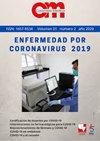哥伦比亚马诺德迪奥斯社区自莱霍以来预防腹泻疾病的教育干预:成功经验。
IF 0.7
4区 医学
Q3 MEDICINE, GENERAL & INTERNAL
引用次数: 4
摘要
目的:衡量一项教育计划的有效性,该计划鼓励照顾者采取健康行为,以预防五岁以下儿童腹泻疾病。设计:准实验教育干预(前后型),采用中断时间序列设计(Burns and Grove 2008)和Hochbaum的健康信念理论。材料和方法:我们反复测量了一项教育计划的效果,该计划旨在促进17名照顾5岁以下儿童的人采用健康行为来预防急性腹泻病,这些人生活在哥伦比亚的Sincelejo市的边缘郊区。采用标准化问卷和半结构化访谈两种方式(前后)调查患者对疾病严重性感知、危险因素识别和疾病预防的信念,并采用信念变化观察指南。结果:我们发现,在实施计划之前,健康信念在所有维度上的存在率都很低,而在干预后,健康信念的变化比例很高,除了对利益的感知,干预前后是相同的。变化的最大预测因子是对疾病严重程度的感知,变异系数为100%。结论:坚持预期行为的教育计划的有效性是通过使用健康行为理论中教育和沟通因素的协同作用来实现的,这些因素超越了认知到意志的情感和结构。本文章由计算机程序翻译,如有差异,请以英文原文为准。
Educational intervention for the prevention of diarrheal diseases in the Mano de Dios neighborhood Sincelejo Colombia: A success experience.
Objective: To measure the effectiveness of an educational program, that encourages the adoption of healthy behaviors in caregivers, to prevent diarrheal diseases in children under five years of age. Design: Quasi experimental educational intervention (before-after type), adopting the interrupted time series design with a group (Burns and Grove 2008) and the Health Beliefs theory of Hochbaum. Materials and methods: We repeatedly measured the effect of an educational program to promote the adoption of healthy behaviors toward the prevention of acute diarrheal disease in 17 caregivers of children under 5 years of age in a marginal suburb of the city of Sincelejo (Colombia). A standardized questionnaire and a semi-structured interview was applied on two occasions (before and after) to investigate the beliefs about the perception of severity and identification of risk factors and prevention of disease, an observation guide to follow changes in beliefs was also used. Results: We found a low presence of healthy beliefs in all dimensions before the implementation of the program and a high proportion of variation of change after the intervention, except in the perception of benefits, which turned out to be the same before and after the intervention. The greatest predictor of change was the perception of the severity of the disease, with a coefficient of variation of 100%. Conclusions: The effectiveness of an educational program to adhere to an expected behavior is achieved by using the synergy of educational and communication elements in health behavior theories that go beyond the cognitive to the affective and structure of volition.
求助全文
通过发布文献求助,成功后即可免费获取论文全文。
去求助
来源期刊

Colombia Medica
MEDICINE, GENERAL & INTERNAL-
CiteScore
2.00
自引率
0.00%
发文量
11
审稿时长
>12 weeks
期刊介绍:
Colombia Médica is an international peer-reviewed medical journal that will consider any original contribution that advances or illuminates medical science or practice, or that educates to the journal''s’ readers.The journal is owned by a non-profit organization, Universidad del Valle, and serves the scientific community strictly following the International Committee of Medical Journal Editors (ICMJE) and the World Association of Medical Editors (WAME) recommendations of policies on publication ethics policies for medical journals.
Colombia Médica publishes original research articles, viewpoints and reviews in all areas of medical science and clinical practice. However, Colombia Médica gives the highest priority to papers on general and internal medicine, public health and primary health care.
 求助内容:
求助内容: 应助结果提醒方式:
应助结果提醒方式:


